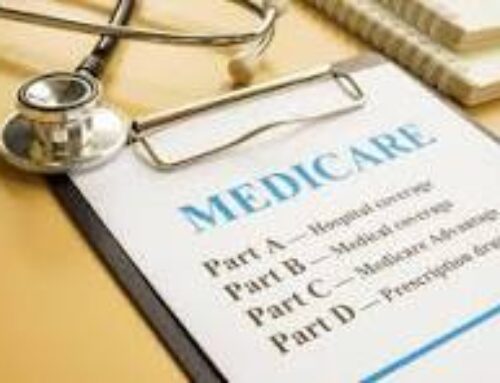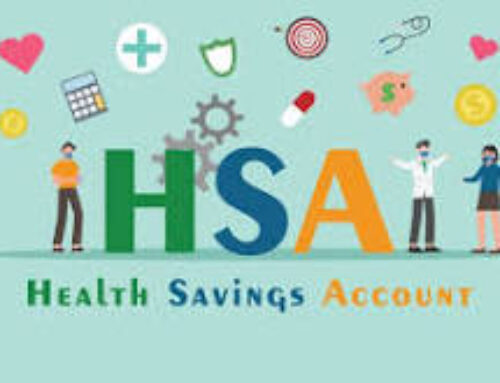Managing Drug Costs
How can households meet the challenge?
Are prescription drug costs burdening your finances? This problem is far too common today. Consider the price tag of some of the drugs used to treat arthritis, hepatitis C, cancer, and multiple sclerosis. A Kaiser Family Foundation study notes that the cost of medications such as Zytiga, Humira, Gleevec, and Revlimid may run anywhere from $4,000-12,000 a year. For the record, Medicare Part D’s catastrophic coverage threshold for prescription medications is currently $4,850 per year (up from $4,700 in 2015).1,2 
How can a household try to manage drug costs? There are some approaches that may help.
Shop around & compare Part D plans annually. This year, the Part D recipients who were automatically re-enrolled in their plans faced monthly premiums averaging $41.46, a 13% rise from $36.38 in 2015. As you shop, keep in mind that plans with smaller premiums may have higher out-of-pocket costs. Some plans also limit monthly doses of certain drugs in their coverage, or request patients to try less costly drugs before branded drugs can be prescribed.3
Consider generics. Generic drugs represent nearly 90% of prescriptions written today and can cost 80-90% less than branded therapies. Sometimes generic alternatives are not available, but often they are.3
Stay within the plan network. If you do, you’ll discover that 85% of Part D plans offer preferred in-network pharmacies. If you go out of the network for non-preferred medications, your cost for those medications may rise. That said, shopping around at different pharmacies may yield some savings. Pharmacies located inside big-box retailers sometimes provide amazing savings on commonly prescribed medications.3
Ask a compounding pharmacy if it can make a medication for you. In such an instance, the savings could be substantial.
Ask your doctor if you can reduce your dose. If that is doable, it could mean monthly savings.
Use a pill cutter. Typically, you pay for drugs by the pill rather than the pill strength. A pill cutter (which you can usually pick up for less than $10) can be an avenue to savings. This is true for many prescription drugs.4
Try GoodRx. This app is free for your phone, and you can also visit GoodRx.com on your PC. GoodRx will give you a coupon so you can buy a prescription drug at the price it has negotiated with particular pharmacies in your area. In some cases, the discounts can be as large as 90%.4
Health Savings Accounts (HSAs) & Roth IRAs may also be useful. If you do not yet qualify for Medicare coverage, you may have the option to create an HSA, which must be used in conjunction with a high-deductible health plan (the current IRS definition of a high-deductible is $1,300 for individuals and $2,600 for families). In 2016, individuals can put up to $3,350 into an HSA, families up to $6,750; those 55 or older may make an extra $1,000 catch-up contribution to their accounts. HSAs are funded with pre-tax dollars, so the contributions reduce your taxable income. HSA funds may be partly or wholly invested, and they can be withdrawn tax-free as long as they pay for qualified medical expenses. Accumulated HSA funds may be withdrawn and spent for any purpose once the account older turns 65; although, withdrawals will be taxed as regular income at that point if not used to pay for qualified health care costs.5
IRS Publication 502 defines the cost of prescription drugs (and insulin) as a qualified medical expense. Qualified medical expenses also include lab fees and the costs of eyeglasses and contact lenses, psychiatric care, and drug and alcohol rehab programs.5,6
If you are already a Medicare recipient, one unheralded approach is to use Roth IRA funds to help meet drug costs. Roth IRA withdrawals are voluntary if you are the original owner of the IRA, and they may be made tax-free if you follow IRS rules. Required Minimum Distributions (RMDs) from traditional IRAs represent taxable income, and those RMDs could put you in a higher tax bracket and even prompt a Medicare surcharge.3
Lastly, see your doctor on a regular basis. A routine checkup could alert you and your primary care physician to what could become a chronic ailment. If treated early, that ailment could possibly be allayed, even overcome. Undetected or untreated, it could result in a long-term health problem with long-run financial impact.
This material was prepared by MarketingPro, Inc., and does not necessarily represent the views of the presenting party, nor their affiliates. This information has been derived from sources believed to be accurate. Please note – investing involves risk, and past performance is no guarantee of future results. The publisher is not engaged in rendering legal, accounting or other professional services. If assistance is needed, the reader is advised to engage the services of a competent professional. This information should not be construed as investment, tax or legal advice and may not be relied on for the purpose of avoiding any Federal tax penalty. This is neither a solicitation nor recommendation to purchase or sell any investment or insurance product or service, and should not be relied upon as such. All indices are unmanaged and are not illustrative of any particular investment.
Registered Representative, Securities offered through Cambridge Investment Research, Inc., a Broker/Dealer, Member FINRA/SIPC. Investment Advisor Representative, Cambridge Investment Research Advisors, Inc., a Registered Investment Advisor. Cambridge and North Light Financial Services are not affiliated. Cambridge does not offer tax advice. Office of Supervisory Jurisdiction: 46 Accord Park Drive / Norwell, MA 02061 Phone: 781-878-4063
Citations.
1 – benefitspro.com/2015/12/09/seniors-face-enormous-out-of-pocket-prescription-c
2 – medicare.gov/part-d/costs/catastrophic-coverage/drug-plan-catastrophic-coverage.html [8/8/16]
3 – fool.com/retirement/2016/08/07/7-strategies-to-lower-your-medicare-prescription-d.aspx [8/7/16]
4 – vitality101.com/health-a-z/8-ways-to-slash-the-price-of-your-meds [6/8/16]
5 – investopedia.com/articles/personal-finance/010516/how-effectively-utilize-health-saving-accounts.asp [1/5/16]
6 – tinyurl.com/zr2fmo7 [8/8/16]





